Intravitreal steroids for macular edema in diabetes
- PMID: 33206392
- PMCID: PMC8095060
- DOI: 10.1002/14651858.CD005656.pub3
Intravitreal steroids for macular edema in diabetes
Abstract
Background: Diabetic macular edema (DME) is secondary to leakage from diseased retinal capillaries with thickening of central retina, and is an important cause of poor central visual acuity in people with diabetic retinopathy. Intravitreal steroids have been used to reduce retinal thickness and improve vision in people with DME.
Objectives: To assess the effectiveness and safety of intravitreal steroid therapy compared with other treatments for DME.
Search methods: We searched the Cochrane Central Register of Controlled Trials (CENTRAL), MEDLINE, and Embase on 15 May, 2019. We also searched reference lists, Science Citation Index, conference proceedings, and relevant trial registers. We conducted a top up search on 21 October, 2020.
Selection criteria: We included randomized controlled trials that evaluated any type of intravitreal steroids as monotherapy against any other intervention (e.g. observation, laser photocoagulation, anti-vascular endothelial growth factor (antiVEGF) for DME.
Data collection and analysis: Two review authors independently assessed study eligibility and risk of bias and extracted data. Where appropriate, we performed meta-analyses.
Main results: We included 10 trials (4348 participants, 4505 eyes). These trials compared intravitreal steroid therapies versus other treatments, including intravitreal antiVEGF therapy, laser photocoagulation, and sham injection. Most trials had an overall unclear or high risk of bias. One trial (701 eyes ) compared intravitreal dexamethasone implant 0.7mg with sham. We found moderate-certainty evidence that dexamethasone leads to slightly more improvement of visual acuity than sham at 12 months (mean difference [MD] -0.08 logMAR, 95% confidence interval [CI] -0.12 to -0.05 logMAR). Regarding improvement of three or more lines of visual acuity, there was moderate-certainty evidence in favor of dexamethasone at 12 months, but the CI covered the null value (risk ratio (RR) 1.39, 95% CI 0.91 to 2.12). Regarding adverse events, dexamethasone increased by about four times the risk of cataract progression and the risk of using intraocular pressure (IOP)-lowering medications compared to sham (RR 3.89, 95% CI 2.75 to 5.50 and RR 4.54, 95% CI 3.19 to 6.46, respectively; moderate-certainty evidence); about 4 in 10 participants treated with dexamethasone needed IOP-lowering medications. Two trials (451 eyes) compared intravitreal dexamethasone implant 0.7mg with intravitreal antiVEGF (bevacizumab and ranibizumab). There was moderate-certainty evidence that visual acuity improved slightly less with dexamethasone compared with antiVEGF at 12 months (MD 0.07 logMAR, 95% CI 0.04 to 0.09 logMAR; 2 trials; 451 participants/eyes; I2 = 0%). The RR of gain of three or more lines of visual acuity was inconsistent between trials, with one trial finding no evidence of a difference between dexamethasone and bevacizumab at 12 months (RR 0.99, 95% CI 0.70 to 1.40; 1 trial; 88 eyes), and the other, larger trial finding the chances of vision gain were half with dexamethasone compared with ranibizumab (RR 0.50, 95% CI 0.32 to 0.79; 1 trial; 432 participants). The certainty of evidence was low. Cataract progression and the need for IOP-lowering medications increased more than 4 times with dexamethasone implant compared to antiVEGF (moderate-certainty evidence). One trial (560 eyes) compared intravitreal fluocinolone implant 0.19mg with sham. There was moderate-certainty evidence that visual acuity improved slightly more with fluocinolone at 12 months (MD -0.04 logMAR, 95% CI -0.06 to -0.01 logMAR). There was moderate-certainty evidence that an improvement in visual acuity of three or more lines was more common with fluocinolone than with sham at 12 months (RR 1.79, 95% CI 1.16 to 2.78). Fluocinolone also increased the risk of cataract progression (RR 1.63, 95% CI 1.35 to 1.97; participants = 335; moderate-certainty evidence), which occurred in about 8 in 10 participants, and the use of IOP-lowering medications (RR 2.72, 95% CI 1.87 to 3.98; participants = 558; moderate-certainty evidence), which were needed in 2 to 3 out of 10 participants. One small trial with 43 participants (69 eyes) compared intravitreal triamcinolone acetonide injection 4 mg with sham. There may be a benefit in visual acuity at 24 months (MD -0.11 logMAR, 95% CI -0.20 to -0.03 logMAR), but the certainty of evidence is low. Differences in adverse effects were poorly reported in this trial. Two trials (615 eyes) compared intravitreal triamcinolone acetonide injection 4mg with laser photocoagulation and reached discordant results. The smaller trial (31 eyes followed up to 9 months) found more visual acuity improvement with triamcinolone (MD -0.18 logMAR, 95% CI -0.29 to -0.07 logMAR), but a larger, multicenter trial (584 eyes, 12-month follow-up) found no evidence of a difference regarding change in visual acuity (MD 0.02 logMAR, 95% CI -0.03 to 0.07 logMAR) or gain of three or more lines of visual acuity (RR 0.85, 95% CI 0.55 to 1.30) (overall low-certainty evidence). Cataract progression was about three times more likely (RR 2.68, 95% CI 2.21 to 3.24; moderate-certainty evidence) and the use of IOP-lowering medications was about four times more likely (RR 3.92, 95% CI 2.59 to 5.96; participants = 627; studies = 2; I2 = 0%; moderate-certainty evidence) with triamcinolone. About 1 in 3 participants needed IOP-lowering medication. One small trial (30 eyes) compared intravitreal triamcinolone acetonide injection 4mg with intravitreal antiVEGF (bevacizumab or ranibizumab). Visual acuity may be worse with triamcinolone at 12 months (MD 0.18 logMAR, 95% CI 0.10 to 0.26 logMAR); the certainty of evidence is low. Adverse effects were poorly reported in this trial. Four trials reported data on pseudophakic participants, for whom cataract is not a concern. These trials found no decrease in visual acuity in the second treatment year due to cataract progression.
Authors' conclusions: Intravitreal steroids may improve vision in people with DME compared to sham or control. Effects were small, about one line of vision or less in most comparisons. More evidence is available for dexamethasone or fluocinolone implants when compared to sham, and the evidence is limited and inconsistent for the comparison of dexamethasone with antiVEGF treatment. Any benefits should be weighed against IOP elevation, the use of IOP-lowering medication and, in phakic patients, the progression of cataract. The need for glaucoma surgery is also increased, but remains rare.
Trial registration: ClinicalTrials.gov NCT01298076 NCT01492400 NCT00367133 NCT00344968 NCT00682539 NCT00168337 NCT00168389 NCT00167518.
Copyright © 2020 The Cochrane Collaboration. Published by John Wiley & Sons, Ltd.
Conflict of interest statement
TR and TAM have no conflicts of interest to disclose.
TL serves as the Principle Investigator and Director for Cochrane Eyes and Vision US Satellite, which is support by grant UG1 EY020522 from the National Eye Insitute, National Institutes of Health, USA.
GV serves as a Coordinating Editor for Cochrane Eyes and Vision.
Figures

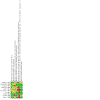
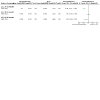





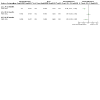
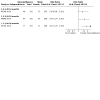
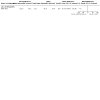

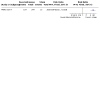
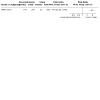

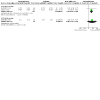
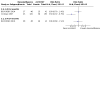

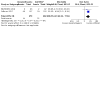
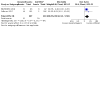
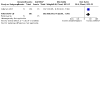

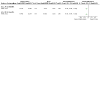
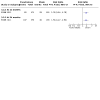
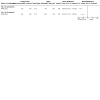
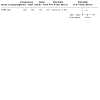




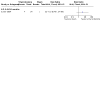
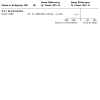


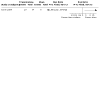
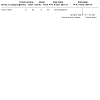

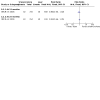
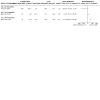

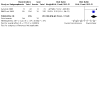
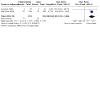
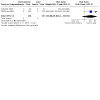
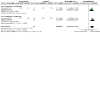

Update of
-
Intravitreal steroids for macular edema in diabetes.Cochrane Database Syst Rev. 2008 Jan 23;(1):CD005656. doi: 10.1002/14651858.CD005656.pub2. Cochrane Database Syst Rev. 2008. Update in: Cochrane Database Syst Rev. 2020 Nov 17;11:CD005656. doi: 10.1002/14651858.CD005656.pub3. PMID: 18254088 Free PMC article. Updated.
References
References to studies included in this review
Avitabile 2005 {published data only}
-
- Avitabile T, Longo A, Reibaldi A. Intravitreal triamcinolone compared with macular laser grid photocoagulation for the treatment of cystoid macular edema. American Journal of Ophthalmology 2005;140(4):695-702. - PubMed
BEVORDEX 2014 {published data only}
-
- Alessandrello EM, Hodgson LA, McAuley AK, Fraser-Bell S, Gillies MC, Lim LL, et al. Retinal vascular calibre changes in the bevordex randomised clinical trial of intravitreal bevacizumab versus intravitreal dexamethasone for diabetic macular oedema. Clinical and Experimental Ophthalmology 2015;43:117-8.
-
- Cornish, E E, Teo, K Y C, Gillies, M C, Lim, L L, McAllister, I, Sanmugasundram, S, Nguyen, V, Wickremasinghe, S, Mehta, H, Fraser-Bell, S. Five year outcomes of the bevordex study (a multicenter randomized clinical trial of intravitreal bevacizumab versus intravitreal dexamethasone). Investigative Ophthalmology and Visual Science 2018;59(9).
-
- Gillies MC, Lim Ll, Campain A, Quin G, Salem W, Li J, et al. A randomized clinical trial of intravitreal bevacizumab versus intravitreal dexamethasone for diabetic macular edema: the BEVORDEX study. Ophthalmology 2014;121(12):2473-81. - PubMed
-
- Gillies MC, Lim Ll, Campain A, Quin G, Salem W, Li J, et al. BEVORDEX—a multicentre randomized clinical trial of intravitreal bevacizumab versus intravitreal dexamethasone for persistent diabetic macular oedema. Investigative Ophthalmology and Visual Science 2014;55(13):ARVO E-abstract 5053. - PubMed
Callanan 2017 {published data only}
-
- Callanan DG, Loewenstein A, Patel SS, Massin P, Corcóstegui B, Li XY, et al. A multicenter, 12-month randomized study comparing dexamethasone intravitreal implant with ranibizumab in patients with diabetic macular edema. Graefe's Archive for Clinical and Experimental Ophthalmology 2017;255(3):463-73. - PubMed
DRCR.net 2008 {published data only}
-
- Bressler NM, Edwards AR, Beck RW, Flaxel CJ, Glassman AR, Ip MS, et al. Exploratory analysis of diabetic retinopathy progression through 3 years in a randomized clinical trial that compares intravitreal triamcinolone acetonide with focal/grid photocoagulation. Archives of Ophthalmology 2009;127(12):1566-71. - PMC - PubMed
-
- Diabetic Retinopathy Clinical Research Network (DRCRnet), Beck RW, Edwards AR, Aiello LP, Bressler NM, Ferris F, Glassman AR, et al. Three-year follow-up of a randomized trial comparing focal/grid photocoagulation and intravitreal triamcinolone for diabetic macular edema. Archives of Ophthalmology 2009;127(3):245-51. - PMC - PubMed
FAME 2011 {published data only}
-
- Campochiaro PA, Brown DM, Pearson A, Ciulla T, Boyer D, Holz FG, et al. Long-term benefit of sustained-delivery fluocinolone acetonide vitreous inserts for diabetic macular edema. Ophthalmology 2011;118(4):626-35. - PubMed
-
- Dempe C, Scholl S, Augustin A. Fluocinolone acetonide (FAc) intravitreal implants improve visual acuity in chronic diabetic macular edema (DME) for up to 36 months. In: Acta Ophthalmologica. Conference: 40th Nordic Congress of Ophthalmology, Helsinki, Finland. 2012.
Kriechbaum 2014 {published data only}
-
- Deak GG, Lammer J, Prager S, Mylonas G, Bolz M, Schmidt-Erfurth U. Refractive changes after pharmacologic resolution of diabetic macular edema. Ophthalmology 2014;121:1054-8. - PubMed
-
- Prager SG, Lammer J, Mitsch C, Hafner J, Pemp B, Scholda C, et al. Analysis of retinal layer thickness in diabetic macular oedema treated with ranibizumab or triamcinolone. Acta Ophthalmologica 2018;96:e195-200. - PubMed
Lim 2012 {published data only}
-
- Lim JW, Lee HK, Shin MC. Comparison of intravitreal bevacizumab alone or combined with triamcinolone versus triamcinolone in diabetic macular edema: a randomized clinical trial. Ophthalmologica 2012;227(2):100-6. - PubMed
MEAD 2014 {published data only}
-
- Boyer DS, Yoon YH, Belfort R Jr, Bandello F, Maturi RK, Augustin AJ, et al, Ozurdex MEAD Study Group. Three-year, randomized, sham-controlled trial of dexamethasone intravitreal implant in patients with diabetic macular edema. Ophthalmology 2014;121:1904-14. - PubMed
-
- Maturi RK, Pollack A, Uy HS, Varano M, Gomes AM, Li XY, et al, Ozurdex MEAD Study Group. Intraocular pressure in patients with diabetic macular edema treated with dexamethasone intravitreal implant in the 3-year MEAD study. Retina 2016;36:1143-52. - PubMed
Ockrim 2008 {published data only}
-
- Hykin P, Ockrim Z, Falk S, Sivaprasad S, Gregor Z, Tufail A. A randomized trial of intravitreal triamcinolone vs. macular laser therapy for persistent clinically significant diabetic macular edema. In: The Macula Society. 2006:174.
-
- Ockrim ZK, Senswathi S, Falk S, Ojeda F, Schadt M, Gregor Z, et al. A randomised trial of intravitreal triamcinolone verses macular laser therapy for persistent clinically significant diabetic macular oedema. Investigative Ophthalmology and Visual Science 2006;47(13):ARVO E-abstract 5438.
-
- Ockrim ZK, Sivaprasad S, Falk S, Roghani S, Bunce C, Gregor Z, et al. Intravitreal triamcinolone versus laser photocoagulation for persistent diabetic macular oedema. British Journal of Ophthalmology 2008;92(6):795-9. - PubMed
-
- Sivaprasad S, Ockrim Z, Massaoutis P, Ikeji F, Hykin PG, Gregor ZJ. Posterior hyaloid changes following intravitreal triamcinolone and macular laser for diffuse diabetic macular edema. Retina (Philadelphia, Pa.) 2008;28(10):1435-42. - PubMed
Sutter 2004 {published data only}
-
- Gillies M. Diabetic macular edema. Ophthalmology 2009;116(3):595-7. - PubMed
-
- Gillies MC, Islam FM, Larsson J, Pasadhika S, Pasadhika S, Gaston C, et al. Triamcinolone-induced cataract in eyes with diabetic macular oedema: 3-year prospective data from a randomized clinical trial. Clinical and Experimental Ophthalmology 2010;38(6):605-12. - PubMed
-
- Gillies MC, Simpson JM, Gaston C, Hunt G, Ali H, Zhu M, et al. Five-year results of a randomized trial with open-label extension of triamcinolone acetonide for refractory diabetic macular edema. Ophthalmology 2009;116(11):2182-7. - PubMed
-
- Gillies MC, Simpson JM, Zhu M, Hunt G, Ali H, Gaston C. Intravitreal triamcinolone. Ophthalmology 2009;116(3):591. - PubMed
-
- Gillies MC, Sutter FK, Simpson JM, Larsson J, Ali H, Zhu M. Intravitreal triamcinolone for refractory diabetic macular edema: two-year results of a double-masked, placebo-controlled, randomized clinical trial. Ophthalmology 2006;113(9):1533-8. - PubMed
References to studies excluded from this review
ACTRN12605000245695 {published data only}
-
- ACTRN12605000245695. A multicentre randomised clinical trial of laser treatment plus 4 mg intravitreal triamcinolone injection to reduce diabetic macular oedema. apps.who.int/trialsearch/Trial2.aspx?TrialID=ACTRN12605000245695 (first received 31 August 2005).
Ali 2014 {published data only}
-
- Ali M, Khan FA, Zafar S, Akhtar F. Short and long term intraocular pressure changes after intravitreal injections of triamcinolone acetonide and bevacizumab in diabetic macular edema. Rawal Medical Journal 2014;39(4):443-5.
Audren 2006 {published data only}
-
- Audren F, Erginay A, Haouchine B, Benosman R, Conrath J, Bergmann JF, et al. Intravitreal triamcinolone acetonide for diffuse diabetic macular oedema: 6-month results of a prospective controlled trial. Acta Ophthalmologica Scandinavica 2006;84(5):624-30. - PubMed
-
- Massin P, Audren F, Haouchine B, Erginay A, Bergmann JF, Benosman R, et al. Intravitreal triamcinolone acetonide for diabetic diffuse macular edema: preliminary results of a prospective controlled trial. Ophthalmology 2004;111(2):218-24. - PubMed
-
- Massin PG, Audren F, Erginay A, Haouchine B, Bergmann JF, Gaudric A. Intravitreal triamcinolone acetonide for diabetic diffuse macular edema: results of a prospective controlled trial. Investigative Ophthalmology and Visual Science 2004;45(13):ARVO E-abstract 3463. - PubMed
Azad 2012 {published data only}
Bandello 2004 {unpublished data only}
-
- Bandello F, Polito A, Dimastrogiovanni A, Palsslos I. Intravitreal triamcinolone associated with grid laser photocoagulation for diffuse diabetic macular edema. In: Macular Society Annual Meeting. 2004.
Beiderbeck 2017 {published data only}
-
- Beiderbeck A, Aballea S, Pochopien M, Maman K, Zur RM, Toumi M. Cost-effectiveness of a 0.2 MG/day fluocinolone acetonide (FAC) implant in the treatment chronic diabetic macular oedema (DMO) in the UK. Value in Health 2017;20(9):A804.
Bhavsar 2007 {published data only}
-
- Bhavsar AR, Googe JM, Stockdale CR, Bressler NM, Brucker AJ, Elman MJ, et al. Risk of endophthalmitis after intravitreal drug injection when topical antibiotics are not required: the Diabetic Retinopathy Clinical Research Network laser-ranibizumab-triamcinolone clinical trials. Archives of Ophthalmology 2009;127(12):1581-3. - PMC - PubMed
Bonini‐Filho 2005 {published data only}
-
- Bonini-Filho MA, Jorge R, Barbosa JC, Calucci D, Cardillo JA, Costa RA. Intravitreal injection versus sub-Tenon's infusion of triamcinolone acetonide for refractory diabetic macular edema: a randomized clinical trial. Investigative Ophthalmology and Visual Science 2005;46(10):3845-9. - PubMed
Bressler 2016 {published data only}
Campochiaro 2010 {published data only}
-
- Campochiaro PA, Hafiz G, Shah SM, Bloom S, Brown DM, Busquets M, et al. Sustained ocular delivery of fluocinolone acetonide by an intravitreal insert. Ophthalmology 2010;117(7):1393-9. - PubMed
Campochiaro 2016 {published data only}
-
- Campochiaro PA, Wykoff CC, Kapik B, Green KE. Sustained intraocular delivery of fluocinolone acetonide slows progression of diabetic retinopathy. Investigative Ophthalmology and Visual Science 2016;57(12):3283.
Cardillo 2005 {published data only}
-
- Cardillo JA, Melo LA Jr, Costa RA, Skaf M, Belfort R Jr, Souza-Filho AA, et al. Comparison of intravitreal versus posterior sub-Tenon's capsule injection of triamcinolone acetonide for diffuse diabetic macular edema. Ophthalmology 2005;112(9):1157-63. - PubMed
Chakrabarti 2007 {published data only}
-
- Chakrabarti A, Chakrabarti M, Stephen V, John SR, Biridhar A. A comparative analysis of various treatment modalities for recalcitrant diabetic macula edema. In: American Academy of Ophthalmology. 2007.
Choi 2007 {published data only}
Chung 2008 {published data only}
Dehghan 2008 {published data only}
-
- Ahmadieh H, Dehghan MH, Ramezani A, Yazdani S, Mohebbi MR. Confounding factors influencing the effect of intravitreal triamcinolone for refractory diabetic macular edema. EVRS Educational Electronic Journal 2007;3(1):15-26.
-
- Dehghan MH, Ahmadieh H, Ramezani A, Entezari M, Anisian A. A randomized, placebo-controlled clinical trial of intravitreal triamcinolone for refractory diabetic macular edema. International Ophthalmology 2008;28(1):7-17. - PubMed
Doi 2012 {published data only}
-
- Doi N, Sakamoto T, Sonoda Y, Yasuda M, Yonemoto K, Arimura N, et al. Comparative study of vitrectomy versus intravitreous triamcinolone for diabetic macular edema on randomized paired-eyes. Graefe's Archive for Clinical & Experimental Ophthalmology 2012;250(1):71-8. - PubMed
Elbendary 2011 {published data only}
-
- Elbendary AM, Shahin MM. Intravitreal diclofenac versus intravitreal triamcinolone acetonide in the treatment of diabetic macular edema. Retina 2011;31(10):2058-64. - PubMed
Elsawy 2012 {published data only}
Er 2005 {published data only}
-
- Er H, Yilmaz H. Intravitreal cortisone injection for refractory diffuse diabetic macular edema. Ophthalmologica 2005;219(6):394-400. - PubMed
EUCTR2016‐001680‐37‐ES {published data only}
-
- EUCTR2016-001680-37-ES. Evaluation of Iluvien for the treatment of DME. apps.who.int/trialsearch/Trial2.aspx?TrialID=EUCTR2016-001680-37-ES (first received 11 August 2016).
EUCTR2016‐003870‐41‐ES {published data only}
-
- EUCTR2016-003870-41-ES. Comparison of the efficacy of treatment of retinal macular inflammation due to diabetes with ozurdex or with ozurdex plus laser treatment in the area. apps.who.int/trialsearch/Trial2.aspx?TrialID=EUCTR2016-003870-41-ES (first received 5 January 2017).
Frey 2008 {published data only}
-
- Frey M, Tönz MS, Brinkmann CK, Wolf-Schurrbusch UEK, Wolf S. Comparison of short-term effects after intravitreal application of triamcinolone and Avastin® (bevacizumab) in patients with diabetic macular edema. Investigative Ophthalmology and Visual Science 2008;49(13):ARVO E-abstract 3512.
Georgopoulos 2006 {published data only}
-
- Georgopoulos M, Sacu S, Vecsei PV, Michels S, Kiss C, Scholda C, et al. Therapy of macular edema with an intravitreal dexamethasone implant. Spektrum der Augenheilkunde 2006;20(5):231-3.
-
- Georgopoulos M, Sacu S, Vescsei P, Michels S, Kiss C, Scholda C, et al. Therapy of macular edema with an intravitreal dexamethasone implant. Spektrum der Augenheilkunde 2005;19(2):98.
Gil 2011 {published data only}
-
- Gil AL, Azevedo MJ, Tomasetto GG, Muniz CH, Lavinsky J. Treatment of diffuse diabetic maculopathy with intravitreal triamcinolone and laser photocoagulation: randomized clinical trial with morphological and functional evaluation. Arquivos Brasileiros de Oftalmologia 2011;74(5):343-7. - PubMed
Heng 2016 {published data only}
-
- Heng LZ, Sivaprasad S, Crosby-Nwaobi R, Saihan Z, Karampelas M, Bunce C, et al. A prospective randomised controlled clinical trial comparing a combination of repeated intravitreal Ozurdex and macular laser therapy versus macular laser only in centre-involving diabetic macular oedema (OZLASE study). British Journal of Ophthalmology 2016;100(6):802-7. - PubMed
Hernandez‐Martinez 2014 {published data only}
INVICTUS 2019 {published data only}
-
- INVICTUS: intravitreal anti-VEGF and dexamethasone implant comparison for the treatment of diabetic macular edema: a 6 months follow-up Study. Acta ophthalmologica. 2019. - PubMed
Isaac 2012 {published data only}
-
- Isaac DL, Abud MB, Frantz KA, Rassi AR, Avila M. Comparing intravitreal triamcinolone acetonide and bevacizumab injections for the treatment of diabetic macular oedema: a randomized double-blind study. Acta Ophthalmologica 2012;90(1):56-60. - PubMed
Joe 2019 {published data only}
-
- Joe AW, Wickremasinghe SS, Gillies MC, Nguyen V, Lim LL, Mehta H, et al. Dexamethasone implant for the treatment of persistent diabetic macular oedema despite long-term treatment with bevacizumab. Clinical and Experimental Ophthalmology 2019;47(2):287-9. - PubMed
Jonas 2004 {published data only}
-
- Jonas JB, Harder B, Kamppeter BA. Inter-eye difference in diabetic macular edema after unilateral intravitreal injection of triamcinolone acetonide. American Journal of Ophthalmology 2004;138(6):970-7. - PubMed
Jonas 2006 {published data only}
-
- Jonas JB, Kampperter BA, Harder B, Vossmerbaeumer U, Sauder G, Spandau UH. Intravitreal triamcinolone acetonide for diabetic macular edema: a prospective, randomized study. Journal of Ocular Pharmacology and Therapeutics 2006;22(3):200-7. - PubMed
Joussen 2007 {published data only}
-
- Joussen AM, Weiss C, Bauer D, Hilgers RD, TIME Study group. Triamcinolone versus inner-limiting membrane peeling in persistent diabetic macular edema (TIME study): design issues and implications. Graefe's Archive for Clinical and Experimental Ophthalmology 2007;245(12):1781-7. - PubMed
-
- Joussen AM, Weiss C, Wolf S, Kirchhof B, Hilgers RD. Triamcinolone versus inner-limiting membrane peeling for diffuse macular edema (TIME study): design issues and implications. Investigative Ophthalmology and Visual Science 2005;46(13):ARVO E-abstract 1468.
JPRN‐JapicCTI‐132139 {published data only}
-
- JPRN-JapicCTI-132139. WP-0508ST Phase ll/lll clinical trial. apps.who.int/trialsearch/Trial2.aspx?TrialID=JPRN-JapicCTI-132139 (first received 30 May 2013).
JPRN‐UMIN000021630 {published data only}
-
- JPRN-UMIN000021630. Anti-VEGF and steroid combination therapy for diabetic macular edema. apps.who.int/trialsearch/Trial2.aspx?TrialID=JPRN-UMIN000021630 (first received 27 March 2016).
Kandasamy 2019 {published data only}
-
- Kandasamy R, Constantinou M, Rogers S, Sandhu SS, Wickremasinghe SS, Al-Qureshi S, et al. A prospective, randomized clinical trial of intravitreous bevacizumab versus triamcinolone in patients with diabetic macular oedema undergoing cataract surgery (the dimecat trial)—6-month results. Clinical and Experimental Ophthalmology 2018;46:36-7.
-
- Kandasamy R, Constantinou M, Rogers Sl, Sandhu SS, Wickremasinghe S, Al-Qureshi S, et al. Prospective randomised clinical trial of intravitreal bevacizumab versus triamcinolone in eyes with diabetic macular oedema undergoing cataract surgery: 6-month results. British Journal of Ophthalmology 2019;103(12):1753-8. - PubMed
Karakurt 2018 {published data only}
Kim 2015 {published data only}
-
- Kim JH, Lee TG, Lew YJ. Short-term efficacy of intravitreal triamcinolone acetonide for bevacizumab-resistant diabetic macular oedema. Acta Ophthalmologica 2015;93(2):e178-9. - PubMed
Kreutzer 2010 {published data only}
-
- Kreutzer TC, Al Saeidi R, Kook D, Wolf A, Ulbig MW, Neubauer AS, et al. Comparison of intravitreal bevacizumab versus triamcinolone for the treatment of diffuse diabetic macular edema. Ophthalmologica 2010;224(4):258-64. - PubMed
Kuppermann 2007 {published data only}
-
- Blumenkranz MS, Haller JA, Kuppermann BD, Williams GA, Ip M, Davis M, et al. Correlation of visual acuity and macular thickness measured by optical coherence tomography in patients with persistent macular edema. Retina 2010;30(7):1090-4. - PubMed
-
- Haller JA, Kuppermann BD, Blumenkranz MS, Williams GA, Weinberg DV, Chou C, et al. Randomized controlled trial of an intravitreous dexamethasone drug delivery system in patients with diabetic macular edema. Archives of Ophthalmology 2010;128(3):289-96. - PubMed
-
- Haller JA, Weinberg D, Chou C, Ip M, Davis M, Whitcup SM. Correlation of macular thickness and visual acuity in patients with persistent macular edema. Investigative Ophthalmology and Visual Science 2006;47(13):ARVO E-abstract 5908.
-
- Haller JA, Weinberg DV, Chou C, lp MS, Davis MD, Whitcup SM. Correlation of visual acuity and macular thickness as measured by OCT in patients with persistent macular edema. In: American Academy of Ophthalmology. 2006:297. - PubMed
-
- Kuppermann BD, Blumenkranz MS, Haller JA, Williams GA, Weinberg DV, Chou C, et al. Randomized controlled study of an intravitreous dexamethasone drug delivery system in patients with persistent macular edema. Archives of Ophthalmology 2007;125(3):309-17. - PubMed
Kwon 2013 {published data only}
Lam 2007 {published data only}
-
- Lam DS, Chan CK, Mohamed S, Lai TY, Lee VY, Liu DT, et al. Intravitreal triamcinolone plus sequential grid laser versus triamcinolone or laser alone for treating diabetic macular edema: six-month outcomes. Ophthalmology 2007;114(12):2162-7. - PubMed
-
- Mohamed S, Leung GM, Chan CK, Lai TY, Lee VY, Liu DT, et al. Factors associated with variability in response of diabetic macular oedema after intravitreal triamcinolone. Clinical and Experimental Ophthalmology 2009;37(6):602-8. - PubMed
Luo 2017 {published data only}
-
- Luo C. Early central subfield thickness and long-term visual acuity changes with fluocinolone acetonide (FAc)-associated continuous microdosing in diabetic macular edema. Investigative Ophthalmology and Visual Science 2017;58(8):ARVO E-abstract 918.
Marey 2011 {published data only}
Massin 2010 {published data only}
-
- Massin P, Williams GA, Haller JA, Kuppermann BD, Blumenkranz MS, Weinberg DV, et al. Evaluation of an intravitreous dexamethasone drug delivery system in patients with persistent diabetic macular oedema. European Journal of Ophthalmology 2010;20(3):634.
Maturi 2015 {published data only}
-
- Maturi RK, Bleau L, Saunders J, Mubasher M, Stewart MW. A 12-month, single-masked, randomized controlled study of eyes with persistent diabetic macular edema after multiple anti-vegf injections to assess the efficacy of the dexamethasone-delayed delivery system as an adjunct to bevacizumab compared with continued bevacizumab monotherapy. Retina 2015;35(8):1604-14. - PubMed
Nassaralla 2020 {published data only}
-
- Nassaralla, J J, Nassaralla, A A, Amaro, M H. Ranibizumab or aflibercept therapy with dexamethosone intravitreal injection efficacy in diabetic macular edema. Investigative Ophthalmology and Visual Science 2018;59(9).
-
- Nassaralla, J J, Nassaralla, A P A, Nassaralla, A A, Amaro, M H, Nassaralla, J J A. Efficacy of ranibizumab plus aflibercept therapy with dexamethosone intravitreal injection in patients with diabetic macular edema-1 year follow-up. Investigative Ophthalmology and Visual Science 2020;61(7).
NCT00231023 {published data only}
-
- NCT00231023. Triamcinolone acetonide injections to treat diabetic macular edema. clinicaltrials.gov/ct2/show/NCT00231023 (first received 3 October 2005).
NCT01788475 {published data only}
-
- NCT01788475. Safety and effectiveness of ozurdex steroid implants for DME after vitrectomy surgery. clinicaltrials.gov/ct2/show/NCT01788475 (first received 8 May 2019).
NCT02294656 {published data only}
-
- NCT02294656. Acute pseudophakic cystoid macular edema treatment trial: intravitreal ranibizumab versus triamcinolone acetonide. clinicaltrials.gov/ct2/show/NCT02294656 (first received 11 September 2018).
NCT02310295 {published data only}
-
- NCT02310295. Prospective, randomized clinical trial comparing macular photocoagulation with or without intravitreal bevacizumab or triamcinolone for the treatment of diabetic macular edema. clinicaltrials.gov/ct2/show/NCT02310295 (first received 8 December 2014).
NCT02471651 {published data only}
-
- NCT02471651. Dexamethasone intravitreal implant for the treatment of persistent diabetic macular edema. clinicaltrials.gov/ct2/show/NCT02471651 (first received 15 June 2015).
NCT02985619 {published data only}
-
- NCT02985619. Bevacizumabe or triamcinolone for persistent diabetic macular edema (BEVATAAC). clinicaltrials.gov/ct2/show/NCT02985619 (first received 7 December 2016).
NCT03984110 {published data only}
-
- NCT03984110. The Use of a Combination of Ozurdex and Eylea Versus Eylea Monotherapy for Diabetic Macular Edema: a Prospective, Comparative Trial (COED Trial). https://clinicaltrials.gov/show/NCT03984110 (first received 21 October 2020).
Neto 2017 {published data only}
-
- Neto HO, Regatieri CV, Nobrega MJ, Muccioli C, Casella AM, Andrade RE, et al. Multicenter, randomized clinical trial to assess the effectiveness of intravitreal injections of bevacizumab, triamcinolone, or their combination in the treatment of diabetic macular edema. Ophthalmic Surgery, Lasers and Imaging Retina 2017;48(9):734-40. - PubMed
Norlaili 2011 {published data only}
Oliveira 2007 {published data only}
-
- Oliveira GP, Paes JP, Camilo ER, Corręa SB, Paiva MM, Baccelli PE, et al. The use of intra-vitreal Avastin injection in diabetic patients with macular edema. Investigative Ophthalmology and Visual Science 2007;48(13):ARVO E-Abstract 5035.
Ozsaygili 2019 {published data only}
-
- Ozsaygili C, Duru N. Comparison of intravitreal dexamethasone implant and aflibercept in patients with treatment-naive diabetic macular edema with serous retinal detachment. Retina 2020;40(6):1044-52. - PubMed
Paccola 2007 {published data only}
-
- Paccola L, Costa RA, Folgosa MS, Barbosa JC, Scott IU, Jorge R. Intravitreal triamcinolone versus bevacizumab for treatment of refractory diabetic macular oedema (IBEME study). British Journal of Ophthalmology 2008;92(1):76-80. - PubMed
Pearson 2002 {unpublished data only}
-
- Nancy Groves, Reviewed by Pearson PA. Steroids implant reduces retinal thickness, improves vision. Ophthalmology Times 15 November 2004:24-6.
-
- Pearson PA, Baker CW, Eliott D, Ip MS, Morese LS, Callanan DG. Fluocinolone acetonide intravitreal implant for diabetic macular edema: 2 year results. Investigative Ophthalmology and Visual Science 2004;45(13):ARVO E-abstract 4673.
-
- Pearson PA, Baker CW, Eliott D, Ip MS, Morese LS, Callanan DG. Fluocinolone acetonide intravitreal implant in patients with diabetic macular edema. In: American Academy of Ophthalmology Annual Meeting. 2002.
-
- Pearson PA, Eliott D, Baker CW, Ip MS, Morese LS, Callanan DG. Fluocinolone acetonide intravitreal implant in patients with diabetic macular edema. In: Association for Research in Vision and Ophthalmology Annual Meeting. 2003.
Pearson 2011 {published data only}
-
- Nancy Groves, Reviewed by Pearson PA. Patients with DME have response to fluocinolone acetonide intravitreal implant in study outcomes. Ophthalmology Times 1 August 2006:38.
-
- Pearson PA, Bevy B, Fluconolone Acetonide Implant Study Group. Fluocinolone acetonide intravitreal implant to treat diabetic macular edema: 2-year results of a multi-center clinical trial. In: Association for Research in Vision and Ophthalmology Annual Meeting. 2005.
-
- Pearson PA, Comstock TL, Ip M, Callanan D, Morse LS, Ashton P, et al. Fluocinolone acetonide intravitreal implant for diabetic macular edema: a 3-year multicenter, randomized, controlled clinical trial. Ophthalmology 2011;118(8):1580-7. - PubMed
-
- Pearson PA, Levy B, Comstock T, Fluocinolone Acetonide Implant Study Group. Fluocinolone acetonide intravitreal implant to treat diabetic macular edema: 3-year results of a multi-center clinical trial. Investigative Ophthalmology and Visual Science 2006;47(13):ARVO E-abstract 5442.
Podkowinski 2019 {published data only}
Posch‐Pertl 2019 {published data only}
Saraiva 2008 {published data only}
-
- Saraiva FP, Queiroz MS, Costa PG, Gasparin F, Nakashima Y. Use of intravitreal triamcinolone and laser photocoagulation for the treatment of diffuse diabetic macular edema. Arquivos Brasileiros de Oftalmologia 2008;71(4):493-8. - PubMed
Serban 2014 {published data only}
Shah 2016 {published data only}
-
- Shah SU, Harless A, Bleau L, Maturi RK. Prospective randomized subject-masked study of intravitreal bevacizumab monotherapy versus dexamethasone implant monotherapy in the treatment of persistent diabetic macular edema. Retina 2016;36(10):1986-96. - PubMed
Shahin 2010 {published data only}
Sharma 2019 {published data only}
-
- Sharma, A, Bellala, K, Dongre, P, Reddy, P. Anti-VEGF versus dexamethasone implant (Ozurdex) for the management of Centre involved Diabetic Macular Edema (CiDME): a randomized study. International ophthalmology 2019. - PubMed
Shimura 2008 {published data only}
-
- Shimura M, Nakazawa T, Yasuda K, Shiono T, Iida T, Sakamoto T, et al. Comparative therapy evaluation of intravitreal bevacizumab and triamcinolone acetonide on persistent diffuse diabetic macular edema. American Journal of Ophthalmology 2008;145(5):854-61. - PubMed
Sobaci 2012 {published data only}
-
- Sobaci G, Ozge G, Erdurman C, Durukan HA, Bayraktar ZM. Comparison of grid laser, intravitreal triamcinolone, and intravitreal bevacizumab in the treatment of diffuse diabetic macular edema. Ophthalmologica 2012;227(2):95-9. - PubMed
Sonoda 2014 {published data only}
-
- Sonoda S, Sakamoto T, Yamashita T, Otsuka H, Shirasawa M, Kakiuchi N, et al. Effect of intravitreal triamcinolone acetonide or bevacizumab on choroidal thickness in eyes with diabetic macular edema. Investigative Ophthalmology and Visual Science 2014;55(6):3979-85. - PubMed
Spandau 2005 {published data only}
Stolba 2005 {unpublished data only}
-
- Stolba U, Binder S, Krebs I, Aggermann T. Vitrectomy versus intravitreal triamcinolon in eyes with persistent diffuse diabetic macular edema—a prospective trial. Investigative Ophthalmology and Visual Science 2005;46(13):ARVO E-abstract 1453.
Verma 2004 {published data only}
-
- Verma LK, Vivek MB, Kumar A, Tewari HK, Venkatesh P. A prospective controlled trial to evaluate the adjunctive role of posterior subtenon triamcinolone in the treatment of diffuse diabetic macular edema. Journal of Ocular Pharmacology and Therapeutics 2004;20(4):277-84. - PubMed
Yu 2007 {published data only}
-
- Yu M, Yuan YS, Chen XM. Intravitreal injection of triamcinolone acetonide for macular edema. International Journal of Ophthalmology 2007;7(5):1355-8.
Zhang 2013 {published data only}
-
- Zhang LW, Su KX, Ma J, Qiu H, Wei XH. Investigation on effects of intravitreal injection of bevacizumab and triamcinolone acetonide for diabetes macular edema. International Eye Science 2013;13(4):798-800.
Ziemssen 2015 {published data only}
-
- Ziemssen F, Agostini H. Re: Boyer et al.: Three-year, randomized, sham-controlled trial of dexamethasone intravitreal implant in patients with diabetic macular edema. Ophthalmology 2015;122(3):e20-1. - PubMed
References to studies awaiting assessment
McKee 2019 {published data only}
-
- McKee KM, Hong G, Gordon GM, Piereamici DJ. Dexamethasone Intravitreal Implant versus Intravitreal Anti-VEGF for the Treatment of Persistent Diabetic Macular Edema, Twelve Month Study Analysis (DIME Study). In: Investigative Ophthalmology & Visual Science July 2019, Vol.60, 2610. June 2019.
Yahia 2008 {published data only}
-
- Yahia SB, Attia S, Hmidi K, Thabti A, Zaouali S, Messaoud R, et al. Intravitreal bevacizumab vs. intravitreal triamcinolone for diabetic macular edema with severe hard exudates. In: American Academy of Ophthalmology. 2008:181.
References to ongoing studies
Chakrabarti 2008 {published data only}
-
- Chakrabarti M, Chakrabarti A, Stephen V, John S. Intravitreal monotherapy with bevacizumab and triamcinolone acetonide vs. combination therapy for recalcitrant diabetic macular edema. In: American Academy of Ophthalmology. 2008:263.
JPRN‐UMIN000025769 {published data only}
-
- JPRN-UMIN000025769. Evaluation of the flare levels and central macular thickness after intravitreal injection of ranibizumab, aflibercept or triamcinolone acetonide in diabetic macular edema patients. apps.who.int/trialsearch/Trial2.aspx?TrialID=JPRN-UMIN000025769 (first received 20 January 2017).
NCT02121262 {published data only}
-
- NCT02121262. A safety and efficacy study of dexamethasone versus laser photocoagulation in patients with diabetic macular edema. clinicaltrials.gov/ct2/show/NCT02121262 (first received 23 April 2014).
NCT03999125 {published data only}
-
- NCT03999125. Anti-VEGF Therapy Versus Dexamethasone Implant for DME. https://clinicaltrials.gov/show/NCT03999125 (first received 21 October 2020).
Additional references
Antcliff 1999
-
- Antcliff RJ, Marshall J. The pathogenesis of edema in diabetic maculopathy. Seminars in Ophthalmology 1999;14(4):223-32. - PubMed
Bucolo 2018
-
- Bucolo C, Gozzo L, Longo L, Mansueto S, Vitale DC, Drago F. Long-term efficacy and safety profile of multiple injections of intravitreal dexamethasone implant to manage diabetic macular edema: a systematic review of real-world studies. Journal of Pharmacological Sciences 2018;138(4):219-32. - PubMed
Chakravarthy 2019
-
- Chakravarthy U, Taylor SR, Koch FH, Castro de Sousa JP, Bailey C, ILUVIEN Registry Safety Study (IRISS) Investigators Group. Changes in intraocular pressure after intravitreal fluocinolone acetonide (ILUVIEN): real-world experience in three European countries. British Journal of Ophthalmology 2019;103(8):1072-7. - PMC - PubMed
Ciulla 2003
-
- Ciulla TA, Amador AG, Zinman B. Diabetic retinopathy and diabetic macular edema: pathophysiology, screening, and novel therapies. Diabetes Care 2003;26(9):2653-64. - PubMed
Ciulla 2004
-
- Ciulla TA, Walker JD, Fong DS, Criswell MH. Corticosteroids in posterior segment disease: an update on new delivery systems and new indications. Current Opinions in Ophthalmology 2004;15(3):211-20. - PubMed
Covidence [Computer program]
-
- Covidence systematic review software. Veritas Health Innovation, Melbourne, Australia. Available at www.covidence.org, Used in 2019-2020.
Do 2015
DRS 1978
-
- Diabetic Retinopathy Study Research Group. Photocoagulation treatment of proliferative diabetic retinopathy: the second report of DRS findings. Ophthalmology 1978;85(1):82-106. - PubMed
ETDRS 1985
-
- Early Treatment Diabetic Retinopathy Study Research Group. Photocoagulation for diabetic macular edema. Early Treatment Diabetic Retinopathy Study report number 1. Archives of Ophthalmology 1985;103(12):1796-806. - PubMed
EURETINA 2017
-
- Schmidt-Erfurth U, Garcia-Arumi J, Bandello F, Berg K, Chakravarthy U, Gerendas BS, et al. Guidelines for the Management of Diabetic Macular Edema by the European Society of Retina Specialists (EURETINA). Ophthalmologica 2017;237(4):185–222. - PubMed
Evans 2014
Glanville 2006
He 2018
Higgins 2019a
-
- Higgins JPT, Thomas J, Chandler J, Cumpston M, Li T, Page MJ, Welch VA (editors). Cochrane Handbook for Systematic Reviews of Interventions. 2nd edition. Chichester (UK): John Wiley & Sons, 2019.
Higgins 2019b
-
- Higgins JPT, Savović J, Page MJ, Elbers RG, Sterne JAC. Chapter 8: Assessing risk of bias in a randomized trial. In: Higgins JPT, Thomas J, Chandler J, Cumpston M, Li T, Page MJ, Welch VA (editors). Cochrane Handbook for Systematic Reviews of Interventions version 6.0 (updated July 2019). Cochrane, 2019. Available from www.training.cochrane.org/handbook.
Holden 2019
-
- Holden SE, Kapik B, Beiderbeck AB, Currie CJ. Comparison of data characterizing the clinical effectiveness of the fluocinolone intravitreal implant (ILUVIEN) in patients with diabetic macular edema from the real world, non-interventional ICE-UK study and the FAME randomized controlled trial. Current Medical Research and Opinion 2019;35(7):1165-76. - PubMed
Jorge 2018
Leasher 2016
-
- Leasher JL, Bourne RR, Flaxman SR, Jonas JB, Keeffe J, Naidoo K, et al. Global estimates on the number of people blind or visually impaired by diabetic retinopathy: a meta-analysis from 1990 to 2010. Diabetes Care 2016;39(9):1643-9. - PubMed
Lee 2015
Martinez‐Zapata 2014
-
- Martinez-Zapata MJ, Marti-Carvajal AJ, Sola I, Pijoan JI, Buil-Calvo JA, Cordero JA, et al. Anti-vascular endothelial growth factor for proliferative diabetic retinopathy. Cochrane Database of Systematic Reviews 2014, Issue 11. Art. No: CD008721. [DOI: 10.1002/14651858.CD008721.pub2] - DOI - PMC - PubMed
Mehta 2018
-
- Mehta H, Hennings C, Gillies MC, Nguyen V, Campain A, Fraser-Bell S. Anti-vascular endothelial growth factor combined with intravitreal steroids for diabetic macular oedema. Cochrane Database of Systematic Reviews 2018, Issue 4. Art. No: CD011599. [DOI: 10.1002/14651858.CD011599.pub2] - DOI - PMC - PubMed
Moutray 2018
Rajesh 2020
-
- Rajesh B, Zarranz-Ventura J, Fung AT, Busch C, Sahoo NK, Rodriguez-Valdes PJ, et al. Safety of 6000 intravitreal dexamethasone implants. British Journal of Ophthalmology 2020;104(1):39-46. - PubMed
Review Manager 2014 [Computer program]
-
- Review Manager 5 (RevMan 5). Version 5.3. Copenhagen: Nordic Cochrane Centre, The Cochrane Collaboration, 2014.
Rosenblatt 2019
-
- Rosenblatt A, Udaondo P, Cunha-Vaz J, Sivaprasad S, Bandello F, Lanzetta P, et al. A collaborative retrospective study on the efficacy and safety of intravitreal dexamethasone implant (Ozurdex) in patients with diabetic macular edema: the European DME registry study. Ophthalmology 2020;127(3):377-93. - PubMed
SAFODEX 2017
-
- Malclès A, Dot C, Voirin N, Vié AL, Agard É, Bellocq D, et al. Safety of intravitreal dexamethasone implant (Ozurdex): The SAFODEX study. Incidence and risk factors of ocular hypertension. Retina 2017;37(7):1352-9. - PubMed
Schunemann HJ 2019
-
- Schünemann HJ, Higgins JPT, Vist GE, Glasziou P, Akl EA, Skoetz N, Guyatt GH. Chapter 14: Completing ‘Summary of findings’ tables and grading the certainty of the evidence. In: In: Higgins JPT, Thomas J, Chandler J, Cumpston M, Li T, Page MJ, Welch VA (editors). Cochrane Handbook for Systematic Reviews of Interventions version 6.0 (updated July 2019). Cochrane, 2019. Available from www.training.cochrane.org/handbook.. Cochrane, 2019.
Smith 2015
-
- Smith JM, Steel DH. Anti-vascular endothelial growth factor for prevention of postoperative vitreous cavity haemorrhage after vitrectomy for proliferative diabetic retinopathy. Cochrane Database of Systematic Reviews 2015, Issue 8. Art. No: CD008214. [DOI: 10.1002/14651858.CD008214.pub3] - DOI - PMC - PubMed
Virgili 2011
-
- Virgili G, Menchini F, Casazza G, Hogg R, Das RR, Wang X, et al. Optical coherence tomography (OCT) for detection of macular oedema in patients with diabetic retinopathy. Cochrane Database of Systematic Reviews 2011, Issue 6. Art. No: CD008081. [DOI: 10.1002/14651858.CD008081.pub2] - DOI - PMC - PubMed
Virgili 2017
Weinberg 2020
References to other published versions of this review
Grover 2006
Publication types
MeSH terms
Substances
Associated data
Grants and funding
LinkOut - more resources
Full Text Sources
Medical

